Things You'll Need
Graphics tablet
Graphics program
or
Drawing paper
Drawing pencil
Tortillion
Pencil eraser
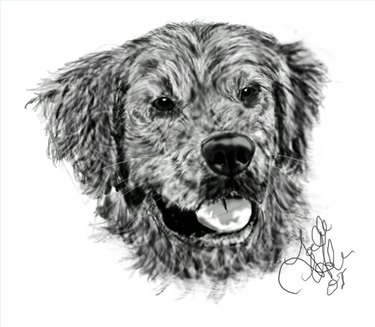
Portraits of dogs are a kind of picture that many artists start with when they begin drawing. And why not? Dogs are friendly, loyal companions for life worthy of artistic tribute. Using any medium and 13 easy steps, anyone can create a dog portrait as fantastic as the pros.
Step 1
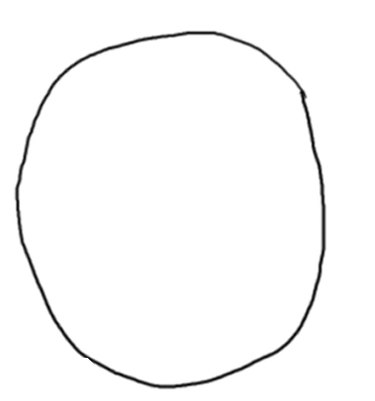
Draw a circle.
Video of the Day
Step 2

Draw a vertical misshapen oval that begins in the center of the primary circle and extends an inch past the bottom of the primary circle. The left side of the oval should bow out slightly, giving it a misshapen appearance. At the top and extending into the oval, add two lines that bend in toward each other slightly. Lighten the bottom of the primary circle’s line slightly.
Step 3
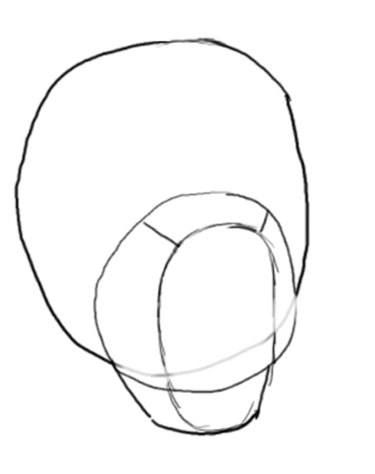
Inside the misshapen oval, starting at the end of the two lines you drew in step two, add another vertical oval that also extends past the primary circle. This oval should be thinner and centered in the first oval.
Step 4
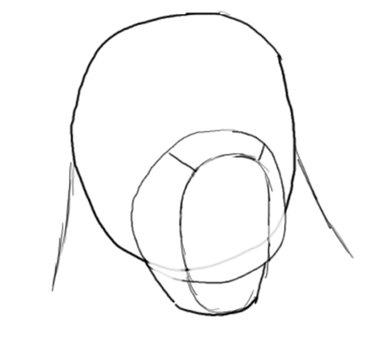
Draw the necklines. Both lines should start on the left and right sides of the primary circle and extend down from center.
Step 5
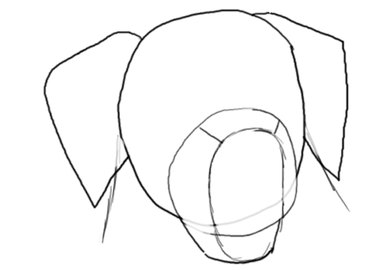
On the left and right side of the primary circle (Step 1), add two triangle-like shapes that start from the right- and left-most top of the circle with the tip of the triangle ending about center of the two vertical ovals that were drawn in Steps 2 and 3.
Step 6
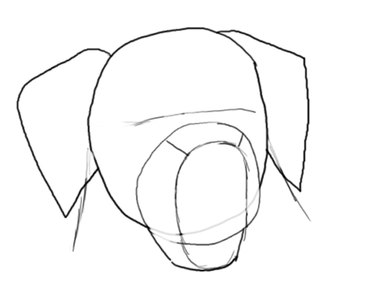
Draw a horizontal line about a half an inch above the oval that was drawn in Step 2. This line will serve as an eye level/guideline.
Step 7
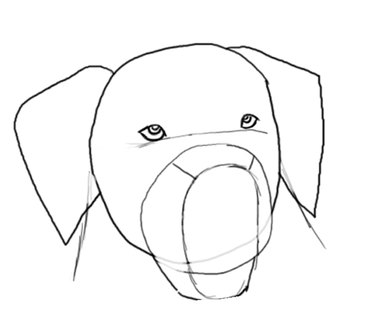
Draw the eyes. Golden retriever eyes are almond in shape, so make sure the center is wide vertically and comes to points in the left and right corners. Make sure that you space the eyes about 2 inches apart. When the actual eye is drawn, add the pupil and light source wherever you wish to eyes to look.
Step 8
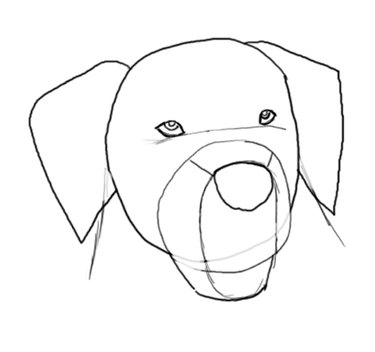
In the second oval that was drawn in Step 3 and at the lower end of the two lines that were drawn in Step 2, add a slightly angled circle for a nose.
Step 9
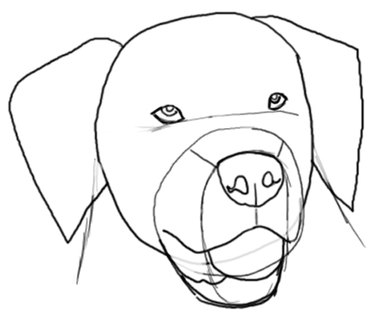
Form the nose and muzzle. Inside the nose circle that was drawn in Step 8, add two smaller circles in the center that are about 3/8 inch away from the left and right side for each circle, and about 1/2 inch away from each other in the center. These circles are the dog’s nostrils. From the bottom of the nose, add a line that is centered and extends down about a 1/2 inch. At the bottom of the line, you will form the dog’s lips using a curvy line—a “peaks and valleys” line. The center peak’s top tip should hit the line you drew from the dog’s nose, and each side (left and right) should slope down for about 1 1/2 inches on the left side and 1/2 inch on the right side, then slope up again slightly. The slopes can vary depending on how much you want your dog to “smile.” Below the “peaks and valleys” line, add a half circle at the bottom for the dog to have an opened mouth appearance. Draw a bottom lip that is about a 1/2 inches long top to bottom that is directly below the half circle. To the left, add a secondary line that indicates the dog’s “lips;” this can be as thick or as thin as you wish.
Step 10

Color the “lips” you drew in Step 9 black. Draw a line in the center of the half circle you drew in Step 9 to indicate a tongue. Around the eyes, add muscle, such as curved lines near the bridge of the snout, and add eyebrow lines above the eyes.
Step 11

Start with the dark tones first, since the dark tones can be blended to fade into your midtones. The bottom of the nose should be dark, with the top being light grey, almost white, and the center of the nose should be medium grey. This will reflect the nose’s wetness. Do the same with the tongue, except the color orders are reversed: dark colors on top, medium grey center, light grey and white at the bottom; again, the color order reflects tongue wetness. Color in the dog’s pupils using black or a dark brown. Add black fur between the nose and upper lip of the dog.
Step 12
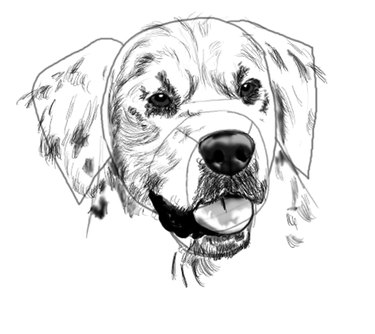
Draw the fur’s dark tones. The dark tones act as a base and shadows. Your dog can have a lot of dark fur or not, depending on your light source.
Step 13
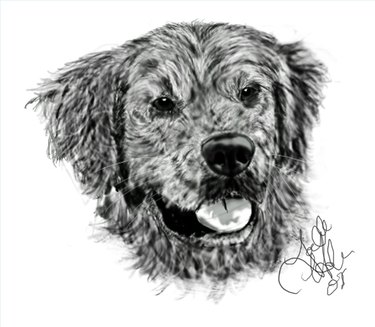
Add the rest of the dog’s fur using—if drawing digitally—various paintbrush sizes from point 1 to point 19. As you draw the fur, follow the tips that were given in Step 12 and vary the brush sizes.
Tip
If drawing digitally, create a new layer and title it “Features” when shading. If drawing traditionally, don’t worry about layers. Shade the nose and tongue. On the top of the head and around the eyes, golden fur grows left on the left side; right on the right. Around the muzzle, fur is short and goes in an upward direction on top; on the sides of the muzzle, fur is short and goes in a downward direction. Fur on the cheeks is horizontal and goes back. Fur on the ears and chest do not have a set direction, so have fun. To change fur shades, vary the brush opacity so the fur can vary from shades of gray to black, or whatever color you choose your golden retriever to be. Overlap the fur and give it a wavy appearance by curving the fur up in some places. After you draw all the fur, take your eraser/eraser tool and “lift” some of your colors for light colored fur and added depth. Once this is finished, your golden retriever is complete.
Warning
A dog’s pupils are not round. Dog pupils are elliptical. Golden retrievers have unusual eyes. As a golden retriever owner, one notices how unusual and expressive golden eyes are. Goldens have dark brown irises with a honey-colored “white area” of the eye. If you choose to color your image, make sure this is reflected.
Video of the Day